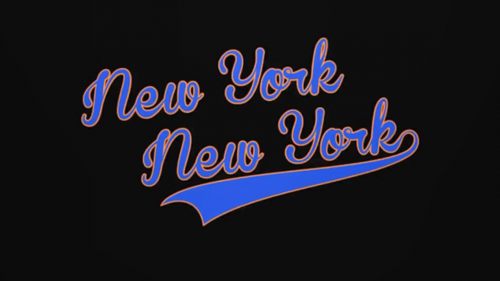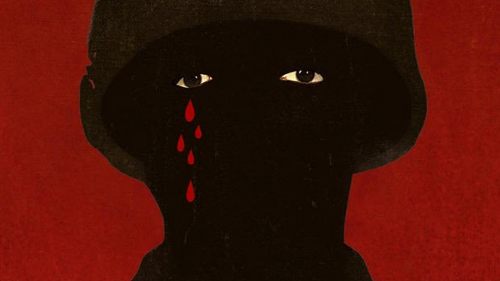BLACKkKLANSMAN And How Spike Lee Three-Acted The Past
The story of Ron Stallworth is incredible. There’s really no getting around how amazing it is that a black police officer was able to infiltrate the Colorado Springs chapter of the Ku Klux Klan through phone conversations and a white body double, getting so far as to have conversations with the Grand Wizard, grand shitstain David Duke without anyone within the Klan knowing the wiser. If you haven’t read Ron Stallworth’s memoir about the investigation, I highly recommend it, but you might notice some major differences between how Stallworth recounts the events and how Spike Lee portrays them in BlacKkKlansman, as if that little extra k in the title is to denote that this version takes liberties with the core premise of the firsthand account. But the real kicker is that this difference doesn’t matter, at least in the sense of narrative relevance, because the truth of Spike Lee’s film isn’t in the events of this single anecdote but in how it can be used as a tool to bridge the racist history of America from our slave-owning past to our so-called Great Again present.
Now, in the broad strokes and in core details that matter, BlacKkKlansman is actually very authentic to the events of, uh, Black Klansman. Ron Stallworth did, in fact, respond to a 1978 KKK advertisement on a whim, thoughtlessly giving his real name over the phone, making him the primary point of contact in an investigation into the organization's potential terrorist activities. He did enlist the assistance of a fellow white police officer, who is known as “Chuck” in the memoir, to act as his surrogate at Klan meetings, and their act was so convincing that Stallworth had phone conversations with David Duke, served as a police escort to Duke in which he duped the Klan leader into taking a picture with him, and was next in line to act as the chapter president.
And yes, the investigation was kept quiet until Stallworth published his account in 2014, but in terms of Stallworth’s barebones, fact-driven accounting – seriously, the book is less than two-hundred pages and reads like an extended series of police reports – that’s about where the similarities between the recorded history and the cinematic adaptation end. In fact, that realization that Stallworth was recognized enough within the organization to gain a leadership position was the primary reason for the investigation’s abrupt conclusion, as the Colorado Police Department could not in effect be leading the very organization they were criminally investigating. This means that the entire third act plot wherein Stallworth foils a plan by rogue Klan members to blow up a Black Student Union meeting is a complete fiction, designed to create a sense of Hollywood escalation so that the story could end with a bang rather than a whimper.
Spike Lee’s adaptation doesn’t stop there, either. Racist officer Andy Landers was not a real person, though Stallworth certainly encountered his share of prejudice within the department in his time as an officer. Flip Zimmerman was not the real name of Stallworth’s undercover colleague, nor was he in any way indicated to be Jewish by Stallworth’s narrative. Perhaps most glaring is the romantic subplot with Patrice Dumas, who is neither a real person nor a stand-in for Stallworth’s wife, whom he was dating at the time of the investigation but was not a leader of the Black Student Union or much of a player in Stallworth’s story at all. With all these factual inaccuracies and narrative shorthands, one could make the argument that Lee is misrepresenting history to political ends. But that would be a disservice and misunderstanding of what Lee’s objectives were in sharing Stallworth’s story.
See, as is per usual of many films in Spike Lee’s filmography, BlacKkKlansman is throwing many ideas at the audience simultaneously, as if Lee needs to get every thought out of his head at once because he might never get to make a movie again. What’s weighing on Lee’s mind now, as with us all, is the resurgence of white supremacy in America, and how exactly it is we got here. A big part of that is our culture as expressed through cinema (which Jacob Knight explored in much greater detail), but it runs deeper than that, into the very intrapersonal conflicts that define our daily lives. Patrice may not be a real person, but she speaks truth to power, acting as a vocal counterpoint to Stallworth’s naiveté over his ability to change the police institution from the inside and forcing him to defend a perspective of police reform that the film does not and cannot cleanly resolve. Landers may not be a real person, but he is representative of countless instances of thoughtless prejudice and aggressive racism that Stallworth and other black professionals have had to deal with for decades as they worked their way into institutions where they had been previously unwelcome. Flip Zimmerman’s real-world counterpart may not have been Jewish, but his character is the focal point in Lee’s examination of passing privilege, not with a black voice but through another object of the Klan’s hatred, forcing the white audience to examine their own complicity in allowing hate to flourish even as they themselves passively claim no fault of their own.
These are messages that congeal into a big, messy, tangled treatise on the persistent and ubiquitous presence of racism in America, which brings us back to that entirely fabricated bombing subplot. Yes, it’s historically false and neatly wraps up the narrative tension that had been building to that point, killing all suspicious Klan members in one fell stroke. But you may notice that film doesn’t stop at that Hollywood ending, or even at the epilogue in which the evil Master Patrolman Landers is arrested for admitting racially-motivated harassment. No, the film continues on, demonstrating that this interesting story of clowning on the Klan didn’t defeat the rising racist tide of the years to come. The film’s narrative closes on Ron and Patrice bearing witness to a cross-burning ceremony, and as the fiery monolith reflects in a hooded figure’s eye, Spike Lee drops an actual truth bomb in the form of documentary footage, showing the Charlottesville white supremacist rally that claimed the life of counter-protester Heather Heyer, as Donald Trump claims both sides are at fault and David Duke translates that to mean the president is leading the KKK to power.
Spike Lee’s BlacKkKlansman differs in significant ways from the factual accounting of events, but it is designed as an empowering piece of motivational fiction on purpose. The “true story” framework affords Lee the luxury of speaking truth through a melding of history and fictional tropes that inspires as many Hollywood products before it have, but the intrusion of reality in the film’s final moments is a chilling reminder that the real world doesn’t wrap up so neatly, that Stallworth’s fictionalized victory doesn’t mean we don’t have work to do in reality. Makes debating the authenticity of minor details in a story designed for our entertainment feel a bit frivolous, doesn’t it?
BlacKkKlansman is now available on Blu-ray and DVD.



